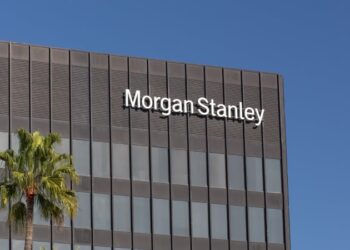Australia’s unemployment rate rose to 3.7 per cent in April, according to the latest data from the Australian Bureau of Statistics (ABS), up from a near 50-year low of 3.5 per cent in March.
According to economists, while not welcome, the data does give the RBA evidence that pressures are easing and that they’re on track to bring inflation to their 2–3 per cent target zone.
“Today’s data reflects signs of easing in the labour market as demand pulls back in response to higher interest rates,” said KPMG economist Michael Malakellis.
“The jobs data, together with yesterday’s wage data, suggest that the peak in the tightening cycle is near,” Mr Malakellis continued.
He noted that the CPI read in May, before the June meeting, will provide the RBA with another important data point.
The ABS reported on Thursday that, despite market expectations for a gain of 25,000, employment fell by 4,300 people during the month, while the number of unemployed people increased by 18,400.
Commenting on the data, GSFM investment strategist Stephen Miller said that the labour force data is “not sufficient” to push the RBA to consider hiking at its June board meeting.
Mr Miller also reflected on Wednesday’s wages data, which revealed that the wage price index (WPI) lifted 3.7 per cent over the year to March, above expectations for a 3.6 per cent rise.
“Neither [WPI and labour data] are they sufficient to sway the RBA from its ‘inflation alert’ stance and neither do they rule out further increases in the policy rate later in the year, particularly given upside risks around inflation and wage/unit labour cost growth,” Mr Miller opined.
He added that, unless there is an unexpected spike in monthly CPI or the wage/unit labour cost measures in the national accounts, the next policy rate hike would likely take place at the RBA’s meeting in August.
Meanwhile, VanEck head of investments and capital markets Russel Chesler suggested that RBA governor Philip Lowe is “likely to have another rate rise up his sleeve” in the next few months, given the still “very strong” employment data.
“The hawkish tone of the latest RBA’s meeting minutes supports our view. The central bank indicated in the minutes that an emerging upside risk to inflation is the possibility that productivity growth remains very weak,” he said.
What Mr Chesler was referring to is the RBA’s statement that “a rise in productivity growth would be needed to ensure consistency of the wages growth forecast with the bank’s inflation target”.
Moreover, Mr Chesler predicted that the employment market would soften further in the coming months due to a combination of an increase in immigration and the lagged effect of 11 rate rises.
In its latest statement on monetary policy, the RBA forecast that unemployment would rise to 4.0 per cent at the end of 2023 and 4.4 per cent at the end of 2024. Wages growth is expected to peak at 4.0 per cent at the end of 2023 before lowering to 3.8 per cent by the end of 2024.







